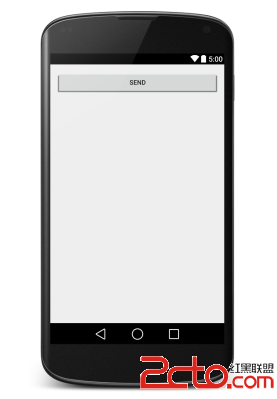編輯:關於Android編程
If you want to jump ahead and see a full working example, download and run the sample app and select the Card Flip example. See the following files for the code implementation:
src/CardFlipActivity.java
animator/card_flip_right_in.xml
animator/card_flip_right_out.xml
animator/card_flip_right_in.xml
animator/card_flip_left_out.xml
layout/fragment_card_back.xml
layout/fragment_card_front.xml
http://blog.csdn.net/sergeycao
Create the Animators
Create the animations for the card flips. You'll need two animators for when the front of the card animates out and to the left and in and from the left. You'll also need two animators for when the back of the card animates in and from the right and out and to the right.
card_flip_left_in.xml
<set xmlns:android="http://schemas.android.com/apk/res/android">
<!-- Before rotating, immediately set the alpha to 0. -->
<objectAnimator
android:valueFrom="1.0"
android:valueTo="0.0"
android:propertyName="alpha"
android:duration="0" />
<!-- Rotate. -->
<objectAnimator
android:valueFrom="-180"
android:valueTo="0"
android:propertyName="rotationY"
android:interpolator="@android:interpolator/accelerate_decelerate"
android:duration="@integer/card_flip_time_full" />
<!-- Half-way through the rotation (see startOffset), set the alpha to 1. -->
<objectAnimator
android:valueFrom="0.0"
android:valueTo="1.0"
android:propertyName="alpha"
android:startOffset="@integer/card_flip_time_half"
android:duration="1" />
</set>
card_flip_left_out.xml
<set xmlns:android="http://schemas.android.com/apk/res/android">
<!-- Rotate. -->
<objectAnimator
android:valueFrom="0"
android:valueTo="180"
android:propertyName="rotationY"
android:interpolator="@android:interpolator/accelerate_decelerate"
android:duration="@integer/card_flip_time_full" />
<!-- Half-way through the rotation (see startOffset), set the alpha to 0. -->
<objectAnimator
android:valueFrom="1.0"
android:valueTo="0.0"
android:propertyName="alpha"
android:startOffset="@integer/card_flip_time_half"
android:duration="1" />
</set>
card_flip_right_in.xml
<set xmlns:android="http://schemas.android.com/apk/res/android">
<!-- Before rotating, immediately set the alpha to 0. -->
<objectAnimator
android:valueFrom="1.0"
android:valueTo="0.0"
android:propertyName="alpha"
android:duration="0" />
<!-- Rotate. -->
<objectAnimator
android:valueFrom="180"
android:valueTo="0"
android:propertyName="rotationY"
android:interpolator="@android:interpolator/accelerate_decelerate"
android:duration="@integer/card_flip_time_full" />
<!-- Half-way through the rotation (see startOffset), set the alpha to 1. -->
<objectAnimator
android:valueFrom="0.0"
android:valueTo="1.0"
android:propertyName="alpha"
android:startOffset="@integer/card_flip_time_half"
android:duration="1" />
card_flip_right_out.xml
<set xmlns:android="http://schemas.android.com/apk/res/android">
<!-- Rotate. -->
<objectAnimator
android:valueFrom="0"
android:valueTo="-180"
android:propertyName="rotationY"
android:interpolator="@android:interpolator/accelerate_decelerate"
android:duration="@integer/card_flip_time_full" />
<!-- Half-way through the rotation (see startOffset), set the alpha to 0. -->
<objectAnimator
android:valueFrom="1.0"
android:valueTo="0.0"
android:propertyName="alpha"
android:startOffset="@integer/card_flip_time_half"
android:duration="1" />
</set>
Create the Views
Each side of the "card" is a separate layout that can contain any content you want, such as two screens of text, two images, or any combination of views to flip between. You'll then use the two layouts in the fragments that you'll later animate. The following layouts create one side of a card that shows text:
<LinearLayout xmlns:android="http://schemas.android.com/apk/res/android"
android:layout_width="match_parent"
android:layout_height="match_parent"
android:orientation="vertical"
android:background="#a6c"
android:padding="16dp"
android:gravity="bottom">
<TextView android:id="@android:id/text1"
style="?android:textAppearanceLarge"
android:textStyle="bold"
android:textColor="#fff"
android:layout_width="match_parent"
android:layout_height="wrap_content"
android:text="@string/card_back_title" />
<TextView style="?android:textAppearanceSmall"
android:textAllCaps="true"
android:textColor="#80ffffff"
android:textStyle="bold"
android:lineSpacingMultiplier="1.2"
android:layout_width="match_parent"
android:layout_height="wrap_content"
android:text="@string/card_back_description" />
</LinearLayout>
and the other side of the card that displays an ImageView:
<ImageView xmlns:android="http://schemas.android.com/apk/res/android"
android:layout_width="match_parent"
android:layout_height="match_parent"
android:src="@drawable/image1"
android:scaleType="centerCrop"
android:contentDescription="@string/description_image_1" />
Create the Fragment
Create fragment classes for the front and back of the card. These classes return the layouts that you created previously in the onCreateView() method of each fragment. You can then create instances of this fragment in the parent activity where you want to show the card. The following example shows nested fragment classes inside of the parent activity that uses them:
public class CardFlipActivity extends Activity {
...
/**
* A fragment representing the front of the card.
*/
public class CardFrontFragment extends Fragment {
@Override
public View onCreateView(LayoutInflater inflater, ViewGroup container,
Bundle savedInstanceState) {
return inflater.inflate(R.layout.fragment_card_front, container, false);
}
}
/**
* A fragment representing the back of the card.
*/
public class CardBackFragment extends Fragment {
@Override
public View onCreateView(LayoutInflater inflater, ViewGroup container,
Bundle savedInstanceState) {
return inflater.inflate(R.layout.fragment_card_back, container, false);
}
}
}
Animate the Card Flip
Now, you'll need to display the fragments inside of a parent activity. To do this, first create the layout for your activity. The following example creates a FrameLayout that you can add fragments to at runtime:
<FrameLayout xmlns:android="http://schemas.android.com/apk/res/android"
android:id="@+id/container"
android:layout_width="match_parent"
android:layout_height="match_parent" />
In the activity code, set the content view to be the layout that you just created. It's also good idea to show a default fragment when the activity is created, so the following example activity shows you how to display the front of the card by default:
public class CardFlipActivity extends Activity {
@Override
protected void onCreate(Bundle savedInstanceState) {
super.onCreate(savedInstanceState);
setContentView(R.layout.activity_activity_card_flip);
if (savedInstanceState == null) {
getFragmentManager()
.beginTransaction()
.add(R.id.container, new CardFrontFragment())
.commit();
}
}
...
}
Now that you have the front of the card showing, you can show the back of the card with the flip animation at an appropriate time. Create a method to show the other side of the card that does the following things:
Sets the custom animations that you created earlier for the fragment transitions.
Replaces the currently displayed fragment with a new fragment and animates this event with the custom animations that you created.
Adds the previously displayed fragment to the fragment back stack so when the user presses the Back button, the card flips back over.
private void flipCard() {
if (mShowingBack) {
getFragmentManager().popBackStack();
return;
}
// Flip to the back.
mShowingBack = true;
// Create and commit a new fragment transaction that adds the fragment for the back of
// the card, uses custom animations, and is part of the fragment manager's back stack.
getFragmentManager()
.beginTransaction()
// Replace the default fragment animations with animator resources representing
// rotations when switching to the back of the card, as well as animator
// resources representing rotations when flipping back to the front (e.g. when
// the system Back button is pressed).
.setCustomAnimations(
R.animator.card_flip_right_in, R.animator.card_flip_right_out,
R.animator.card_flip_left_in, R.animator.card_flip_left_out)
// Replace any fragments currently in the container view with a fragment
// representing the next page (indicated by the just-incremented currentPage
// variable).
.replace(R.id.container, new CardBackFragment())
// Add this transaction to the back stack, allowing users to press Back
// to get to the front of the card.
.addToBackStack(null)
// Commit the transaction.
.commit();
}
 Android Camera API2.0下全新的Camera FW/HAL架構簡述
Android Camera API2.0下全新的Camera FW/HAL架構簡述
前沿:前面博文大多少總結的是Camera HAL1到HAL3的系統架構,但這些架構對於Camera APP開發來說依舊還是處於Camera API1.0的標准
 Android開發基礎之Main線程向Worker線程發送消息
Android開發基礎之Main線程向Worker線程發送消息
一 布局 如圖: 二 代碼 private Button button; private Handler handler;
 Android js啟動APK
Android js啟動APK
1.在移動設備訪問m.alipay.com時,如果本地安裝了支付寶客戶端,則浏覽器會調用本地客戶端,沒有安裝則會跳轉到下載頁面,提示安裝。剛好有這樣的需求,就分析了下支付
 分享Android中pullToRefresh的使用心得
分享Android中pullToRefresh的使用心得
pullToRefresh的導入首先,點擊new按鈕 -> import Module 然後在 New Module界面選擇已經在本地的含有源代碼的pul